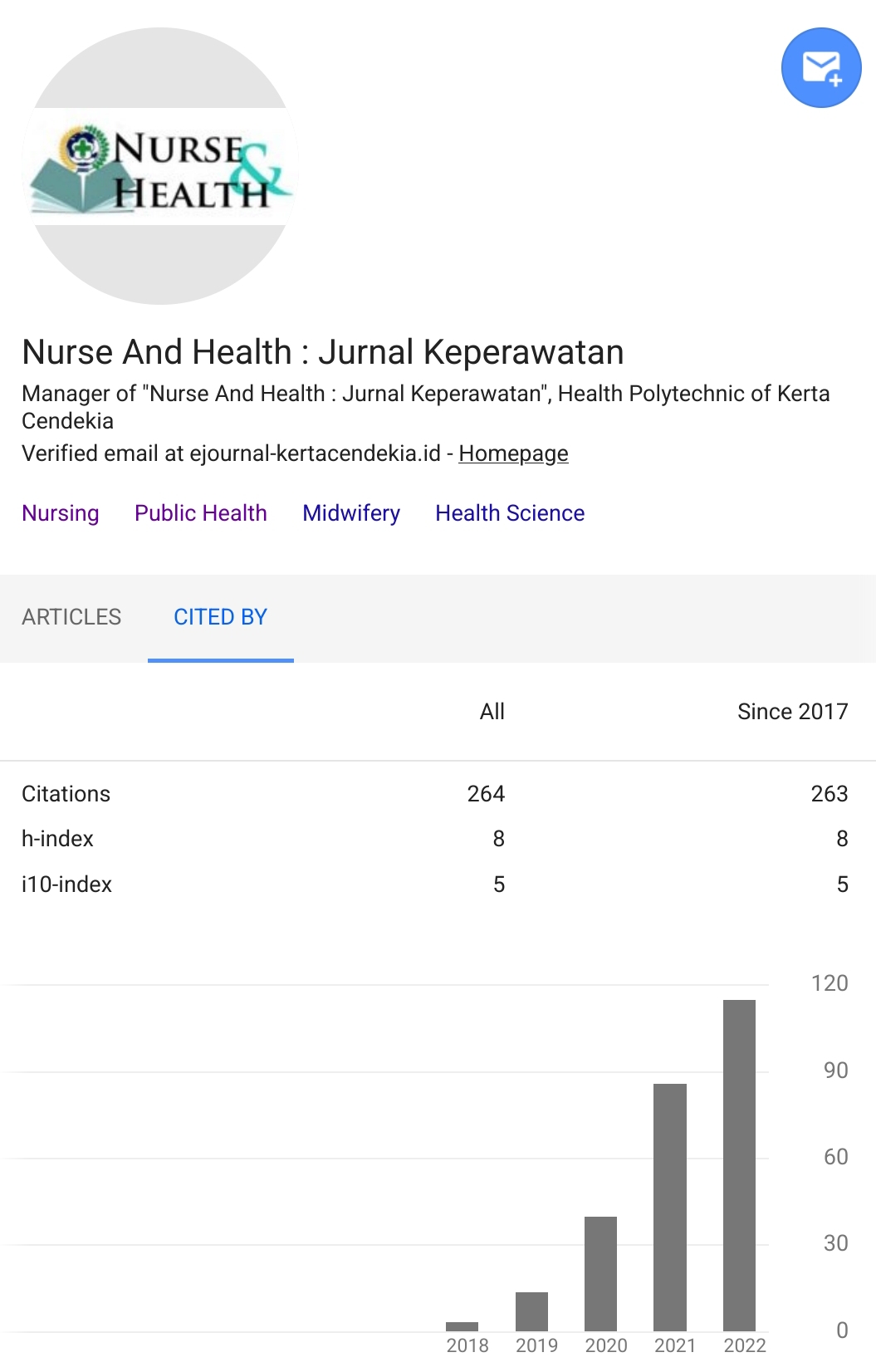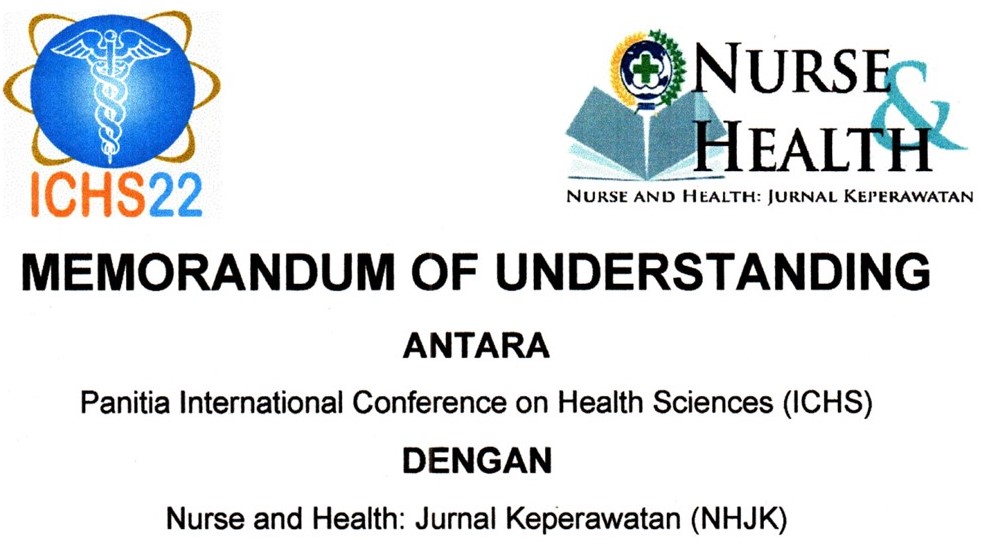DIFFERENCES IN THE EFFECTIVENESS OF THE DIRECT DEMONSTRATION METHOD AND VIDEO SCREENING OF FIRST AID IN TRAFFIC ACCIDENTS ON THE INCREASE IN KNOWLEDGE OF SENIOR HIGH SCHOOL STUDENTS
Abstract
Background: Traffic accidents are unpredictable collisions among vehicles that might lead to casualties. Injuries due to traffic accidents have killed at least 1.2 million lives per year. Fatalities are high as first aid is not properly administered, causing to higher mortality rate.Objectives: This research compared the effectiveness between the use of live demonstration and videos on high school students’ first aid knowledge.Methods: The research was conducted in the form of a comparative study with a cross sectional approach, for three months, starting from March to June 2019 in Senior High School 1 Rendang Karangasem Bali. The sample taken as many as 150 people as respondents who were divided into 2 groups, namely group 1 attended counseling which featured live demonstrations, while group 2 attended counseling where video was used as a medium. The instrument used was a questionnaire modified by researchers from Gorucu-Coskuner, H., Atik, E., & Taner, T. (2020) with 24 question items with yes and no answers. The validity test was carried out using the Pearson product-moment bivariate correlation technique where these results indicate that the value of "r count" (0.873)> "r table (0.227) means that the questionnaire is valid. Reliability test using alpha technique (Cronbach's) obtained r count (0.919)> "r alpha" (0.227) then the questionnaire was declared fit for use. Furthermore, bivariate analysis was carried out by comparing the knowledge of the two groups using the Mann-Whitney analysis.Results: A meaningful difference was found between the use of live demonstration and videos at P <α = 0.05 and p = 0,000. The mean score of the pretest done in group 2 was 96.70, while the one of the groups 1 was 48.30 which scores increased in the posttest to 105.39 and 39.61.Conclusion: Therefore, the use of video media has been found more effective than the use of live demonstrations in improving students’ first aid knowledge. Based on this finding, it is considered necessary to create more tutorial videos to improve first aid knowledge of the community especially students. Keywords: Counseling, Demonstration, Video, First Aid, Traffic Accident.Downloads
References
Desiartama, A., & Aryana, I. G. N. W. (2017). Gambaran Karakteristik Pasien Fraktur Femur Akibat Kecelakaan Lalu Lintas Pada Orang Dewasa Di Rumah Sakit Umum Pusat Sanglah Denpasar Tahun 2013. E-Jurnal Medika Udayana, 6(5).
Gorucu-Coskuner, H., Atik, E., & Taner, T. (2020). Comparison of Live-Video and Video Demonstration Methods in Clinical Orthodontics Education. Journal of Dental Education. https://doi.org/10.21815/jde.019.161
Kompas. (2017). Kematian akibat Kecelakaan di Indonesia Tertinggi di Dunia. Kompas, p. 1. Retrieved from https://otomotif.kompas.com/read/2017/12/04/100400715/kematian-akibat-kecelakaan-di-indonesia-tertinggi-di-dunia
Kon, H., Botelho, M. G., Bridges, S., & Leung, K. C. M. (2015). The impact of complete denture making instructional videos on self-directed learning of clinical skills. Journal of Prosthodontic Research. https://doi.org/10.1016/j.jpor.2015.01.004
Notoatmodjo. (2018). Metodologi Penelitian Kesehatan. Jakarta: Rineka Cipta. Notoatmodjo, S. (2018). Metodologi Penelitian Kesehatan. Jakarta: Rineka Cipta.
Organization, W. H. (2007). Risk reduction and emergency preparedness. WHO Document Production Services, Geneva, Switzerland.
Palang Merah Indonesia. (2008). Pertolongan Pertama Palang Merah Remaja Wira (Pertama; D. Allan Darwis & U. Rina, eds.). jakarta: Palang Merah Indonesia.
Pilieci, S. N., Salim, S. Y., Heffernan, D. S., Itani, K. M. F., & Khadaroo, R. G. (2018). A randomized controlled trial of video education versus skill demonstration: Which is more effective in teaching sterile surgical technique? Surgical Infections. https://doi.org/10.1089/sur.2017.231
Pratiwi, I. (2011). Kesiapan Anggota Palang Merah Remaja (PMR) Dalam Melakukan Pertolongan Pertama kegawatdaruratan di Sekolah. Yogyakarta: Fakutas Kedokteran UGM. Skripsi.
Profil Kesehatan 2017. (2012). Data Profile Kesehatan Indonesia 2017. Ministry of Health Indonesia. https://doi.org/10.1002/qj
Thilakumara, I. P., Jayasinghe, R. M., Rasnayaka, S. K., Jayasinghe, V. P., & Abeysundara, S. (2018). Effectiveness of Procedural Video Versus Live Demonstrations in Teaching Laboratory Techniques to Dental Students. Journal of Dental Education. https://doi.org/10.21815/jde.018.086
Thygerson, A., Physicians, A. C. of E., & Thygerson, S. (2011). First Aid. Retrieved from https://books.google.co.id/books?id=Kp1yVNQu5bEC
Authors who publish with Nurse and Health: Jurnal Keperawatan agree to the following terms:
- Authors retain copyright licensed under a Creative Commons Attribution-NonCommercial 4.0 (CC BY-NC 4.0), which allows others to remix, tweak, and build upon the authors' work non-commercially, and although the others' new works must also acknowledge the authors and be non-commercial, they don't have to license their derivative works on the same terms.
- Authors are permitted and encouraged to post their work online (e.g., in institutional repositories or on their website) prior to and during the submission process, as it can lead to productive exchanges, as well as earlier and greater citation of published work (See The Effect of Open Access). Authors can archive pre-print and post-print or publisher's version/PDF.








_resize1.jpg)















